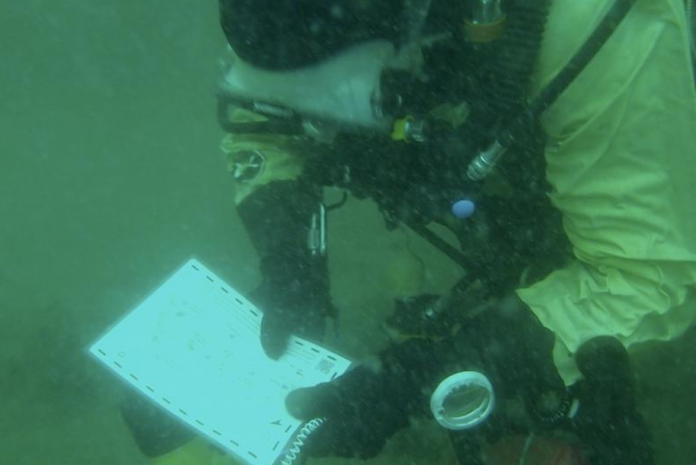The Iona II had only been launched seven months earlier and had already had an eventful life. Initially built as a fast and luxurious passenger ferry for the Scottish Western Isles, the owners soon realised that there was a great deal of money to be made by ships running the blockade of Confederate harbours as part of the American Civil War effort.
However, it turned out that the strengthening works completed on the Iona II were not sufficient for open ocean swells and storms. After taking on water through the hull for almost two days, the captain sought shelter on the east coast of Lundy Island where the vessel soon sank in the early hours of 2 February 1864.
Protecting the remains
Today, there are still considerable remains of the steamer on the seabed with two sets of twin boilers and the engine visible. Sometimes the outline of the hull can be seen, but that depends on the sediment levels. That is one of the reasons why English Heritage commissioned Wessex Archaeology last summer to create a dive trail for this designated wreck. It is known that the sediment levels change over time, but it is not known whether this is a seasonal effect or whether major changes are happening on the site. Either way, these changes could be detrimental to the wreck.
As the
Iona II is a designated wreck, all divers wishing to visit the site must apply to English Heritage for a licence on behalf of the Department for Culture, Media and Sport (DCMS). But now that there is a dive trail for the Iona II, divers have access to underwater guidebooks which provide a more enlightening dive experience on the wreck. There are
four themed guidebooks to accommodate divers of different interests or to encourage repeat dives. Visitors can learn about the history of the vessel, diving investigations on the wreck, the technical details of the vessel or even how to identify local marine life on the site.
But for those divers who are after a more participatory experience, there is an underwater guide that shows
12 points on the wreck where photos can be taken to monitor changes to sediment levels or wreck structure. These photos can then be uploaded to the dedicated
Iona II Dive Trail
Flickr group where the images can be compared and contrasted with others to observe any changes. This information will then be used by English Heritage to assist their management of the designated site and ensure that the
Iona II wreck survives for generations of divers to come.
Once divers have obtained their licence to dive the designated wreck
Iona II, there are several avenues for accessing the dive trail guides. The Lundy Warden has copies as do most local dive clubs. Also, any charter boat that has a licence for the wreck will have sets available for use, and as of this week, underwater guides and information booklets can be downloaded from the
Iona II Dive Trail website.
Peta Knott, Archaeologist (Coastal & Marine)
Image credits:
Divers using the Iona II underwater guides, by Richard Holden (Severnside Sub Aqua Club)
Diver with sternpost, by Mike Deaton (Appledore Sub Aqua Club)

Source: Wessex Archaeology



